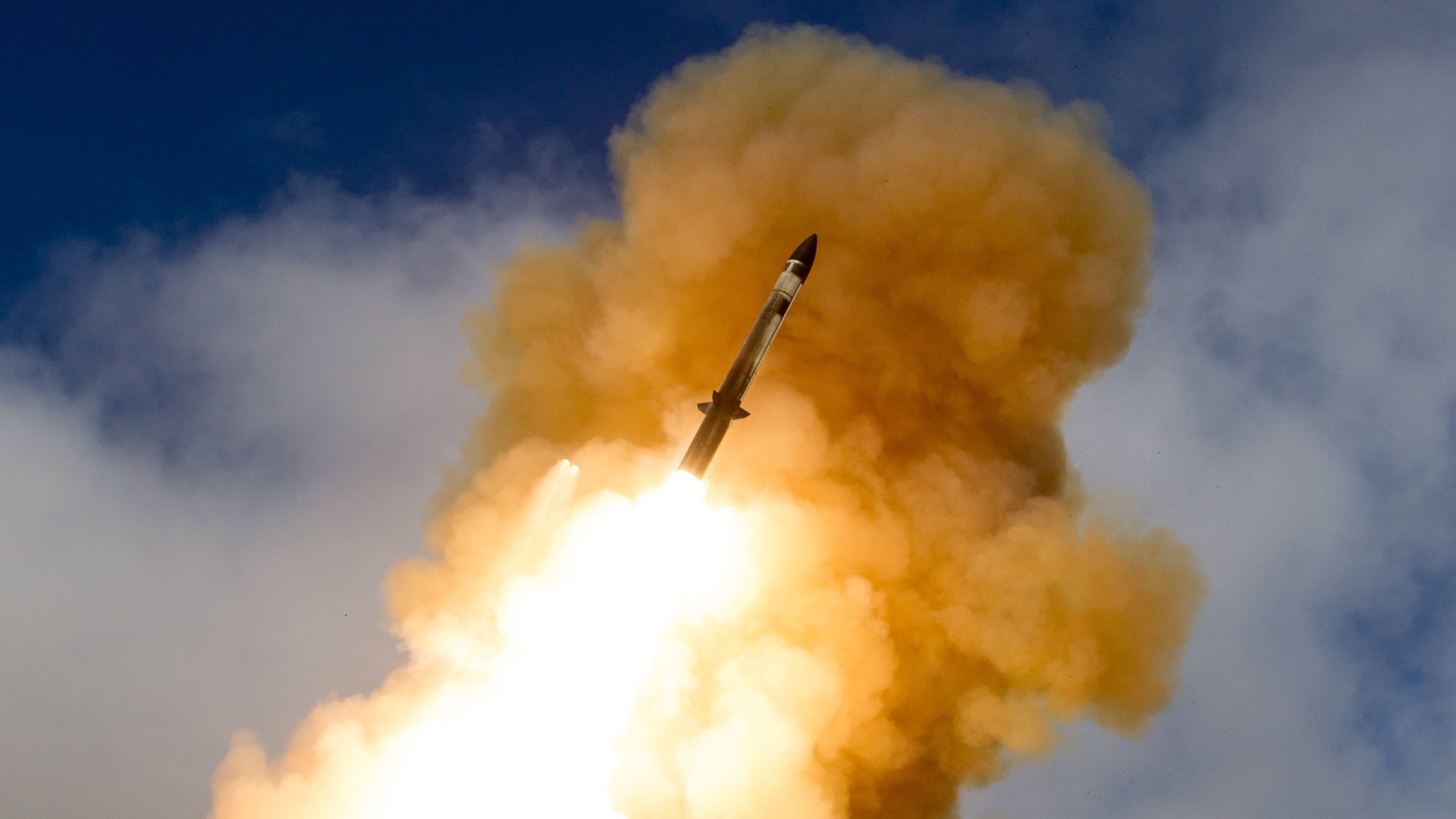WASHINGTON — The Pentagon intercepted a test ballistic missile with the Standard Missile-3 Block IIA system, the second time that weapon has been successfully tested — a relief for the department following two consecutive test failures.
The SM-3 Block IIA is a co-development between the U.S. and Japan, and is expected to be equipped on both the U.S. Aegis Ashore stations in Romania and Poland and the future Aegis Ashore stations in Japan — making it a keystone to America’s short- and intermediate-range missile defense strategies.
The system can be launched from sea or land via the Aegis Ballistic Missile Defense system. The IIA variant comes with enlarged rocket motors and a bigger kinetic warhead, according to industry lead Raytheon.
RELATED

The intercept occurred off the west coast of Hawaii, when an SM-3 launched by the guided-missile destroyer John Finn destroyed a target launched from the Pacific Missile Range Facility at Kauai.
“This was a superb accomplishment and key milestone for the SM-3 Block IIA return to flight," Missile Defense Agency Director Lt. Gen. Sam Greaves said in a statement. "My congratulations to the entire team, including our sailors, industry partners, and allies who helped achieve this milestone."
“This second intercept for the SM-3 Block IIA is a success we share with the Missile Defense Agency and the country of Japan, our cooperative development partners,” Taylor Lawrence, Raytheon Missile Systems president, said in a statement. “Together, we are building the most advanced solutions for ballistic missile defense.”
RELATED

Tests have not always gone smoothly for the new SM-3 system. While the first system test in February 2017 was successful, a second test in June 2017 was washed out after a sailor accidentally triggered the missile’s self-destruct feature by misidentifying it as a friendly target. A third test, held in January 2018, ended in a failure that cost taxpayers $130 million.
Speaking to reporters in March, Greaves emphasized that even in an intercept failure, MDA gains a wealth of knowledge from each test launch. As he put it then: “If North Korea is learning as much as I’m learning from these failures, we all ought to be concerned.”
Along those lines, it is notable that the MDA statement said: “Based on observations and initial data review, the test met its objectives. Program officials will continue to evaluate system performance.”
Aaron Mehta was deputy editor and senior Pentagon correspondent for Defense News, covering policy, strategy and acquisition at the highest levels of the Defense Department and its international partners.







